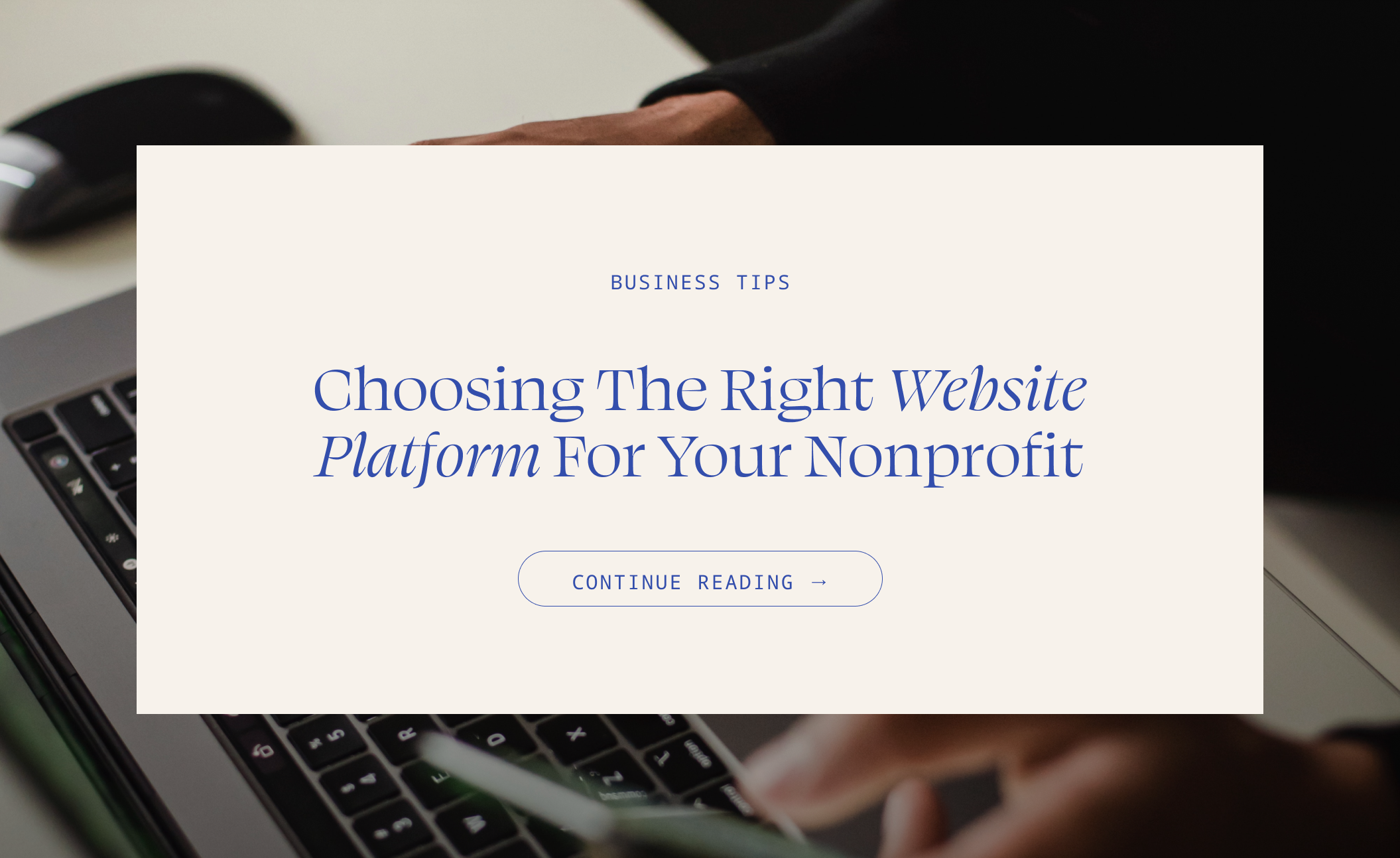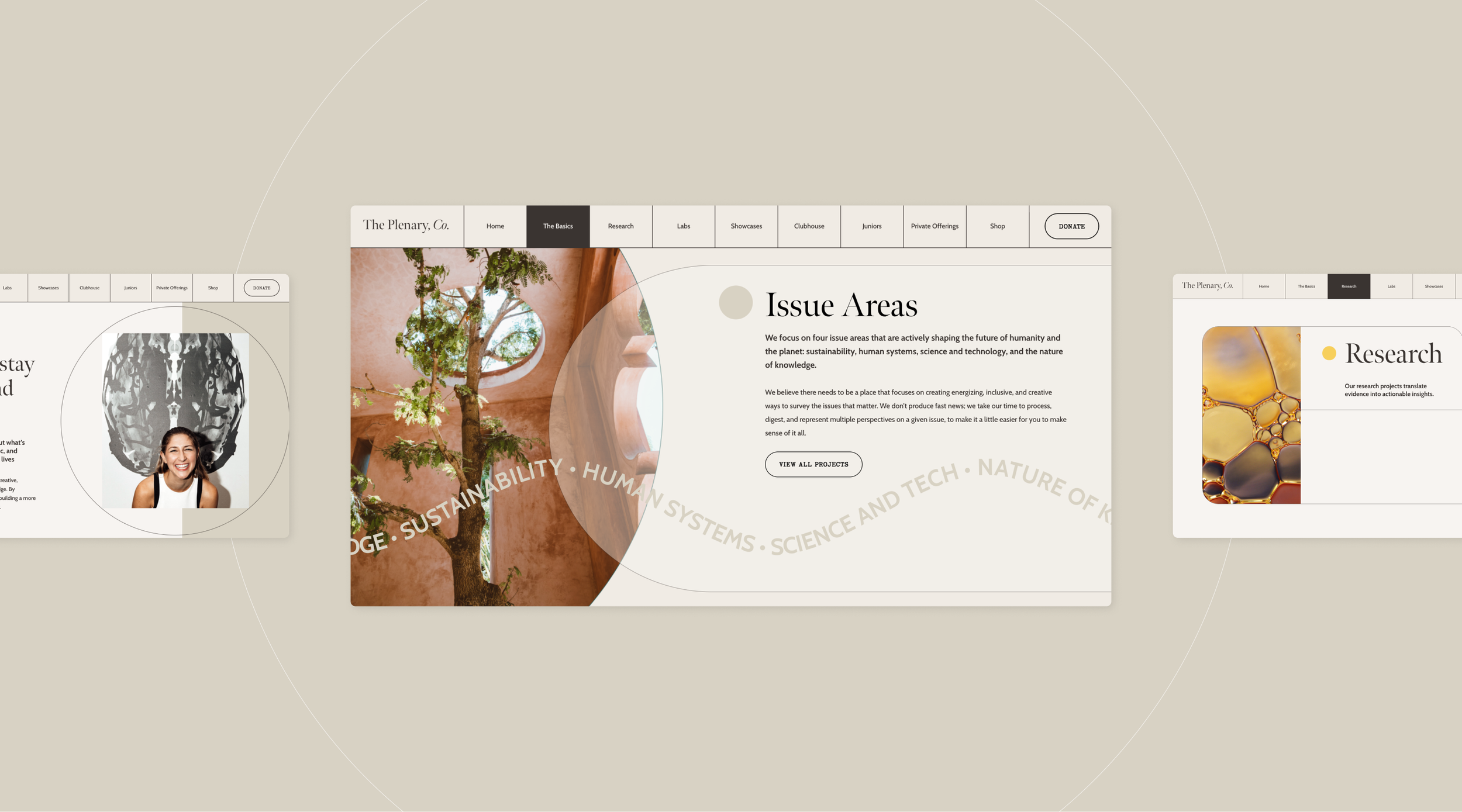Choosing the Right Website Hosting Platform for Your Nonprofit
Having a strong online presence is crucial for nonprofits looking to reach a wider audience, connect with donors, and promote their causes. One of the foundational elements of a successful online presence is selecting the right website hosting platform. With numerous options available, it can be overwhelming to decide which one is best suited for your nonprofit's needs.
Here are some key factors to consider when making this decision and provide guidance on choosing the best website hosting platform for your nonprofit organization.
Client Example: The Plenary, Co.
Understand Your Goals and Needs
Before diving into the world of website hosting, it's essential to have a clear understanding of your nonprofit's goals and website requirements. Ask yourself the following questions:
What is the primary purpose of your website (e.g., raising funds, increasing awareness, sharing information)?
How much website traffic do you expect to have?
Do you need e-commerce capabilities for accepting donations?
Will you be publishing and managing a blog or news section?
Do you require additional features such as event management, volunteer registration, or email newsletters?
Knowing your specific goals and needs will help you narrow down your options and select a hosting platform that aligns with your objectives.
Consider Your Budget
We know nonprofits often operate on tight budgets, making cost a significant factor in the hosting platform decision. While there are both free and paid hosting options available, it's crucial to understand that the features and level of support can vary significantly.
Free hosting services might be tempting, but they often come with limitations such as ads on your site, restricted customization options, and limited support. Paid hosting plans, on the other hand, offer more control, better performance, and dedicated customer support. Be sure to assess your budget realistically and find a balance between cost and quality.
Evaluate Technical Requirements
The technical requirements of your website can impact your choice of hosting platform. Consider the following technical aspects:
Content Management System (CMS): Do you have a lot of content to manage and organize? If so, ensure your hosting platform supports it. Webflow and Wordpress are both great for CMS.
Performance: Does your website require high-speed performance, especially if you expect significant traffic? Look for hosting providers with good uptime and server speed.
Scalability: Will your website need to grow over time? Ensure your hosting plan allows for easy scalability as your nonprofit expands its online presence.
Security: Do you collect sensitive donor information? Prioritize hosting platforms with robust security features, including SSL certificates and regular backups.
Client Example: Kutoa Project
Review User-Friendliness
Consider the technical expertise of your team when selecting a hosting platform. Some platforms are more user-friendly and require minimal technical knowledge, while others may demand more technical expertise. Look for hosting providers that offer user-friendly control panels and support for beginners if your team lacks technical skills. Even if you have a designer and developer set it up, you’ll want to make sure you can continue to update it with ease if your budget doesn’t allow for ongoing development support.
Explore Support and Resources
Support and resources can be crucial for nonprofits, especially if you have a small team or limited technical expertise. Investigate the level of customer support provided by hosting platforms. Do they offer 24/7 customer support through multiple channels like live chat, email, and phone? Additionally, check if they provide resources such as tutorials, documentation, and community forums to help you troubleshoot issues or make the most of their services.
Our top two favorite website platforms for nonprofits:
Squarespace: Our go to! Squarespace has a large capability for SEO, analytics, user interface, and is a one-stop-shop for simple e-commerce for donations, marketing, scheduling, blogging, and more. With a developer you can customize Squarespace’s design easily to create unique and eye catching experiences. The downside is the limitations on content types and lack of a simple CMS integration (though it can be done tediously!).
Webflow: Another incredible platform that has an extremely robust capabilities for CMS, integrations, and interactivity. With a developer you can make nearly everything you can dream up come to life. The down sides are that it has a bit larger of a learning curve for non-designers to edit and not user friendly to set up on your own without technical knowledge.
There are also other great platforms like WIX, WordPress, Shopify, Showit, Amazon, and many more! They each have unique capabilities and user interfaces. Take a look through their capabilities to make an informed decision to which is right for you.
Selecting the right website hosting platform for your nonprofit is a critical decision that can greatly impact your online presence and success.
By understanding your goals, budget, technical requirements, user-friendliness, and support options, you can make an informed choice that will serve your nonprofit's mission effectively.
Take the time to research and compare hosting providers, and don't hesitate to seek recommendations or consult with experts in the field. With the right hosting platform, your nonprofit can build a strong online presence, engage with supporters, and make a positive impact on the world.
If you need help with the design and development once you’ve chosen your platform (or need assistance deciding), our team would be happy to help!
We’d love to help tell your story in the most thoughtful and strategic way. Fill out an inquiry form or hit reply to send us an email so we can start the conversations. We know you have a story to tell and lives to touch, let us help you get there.




